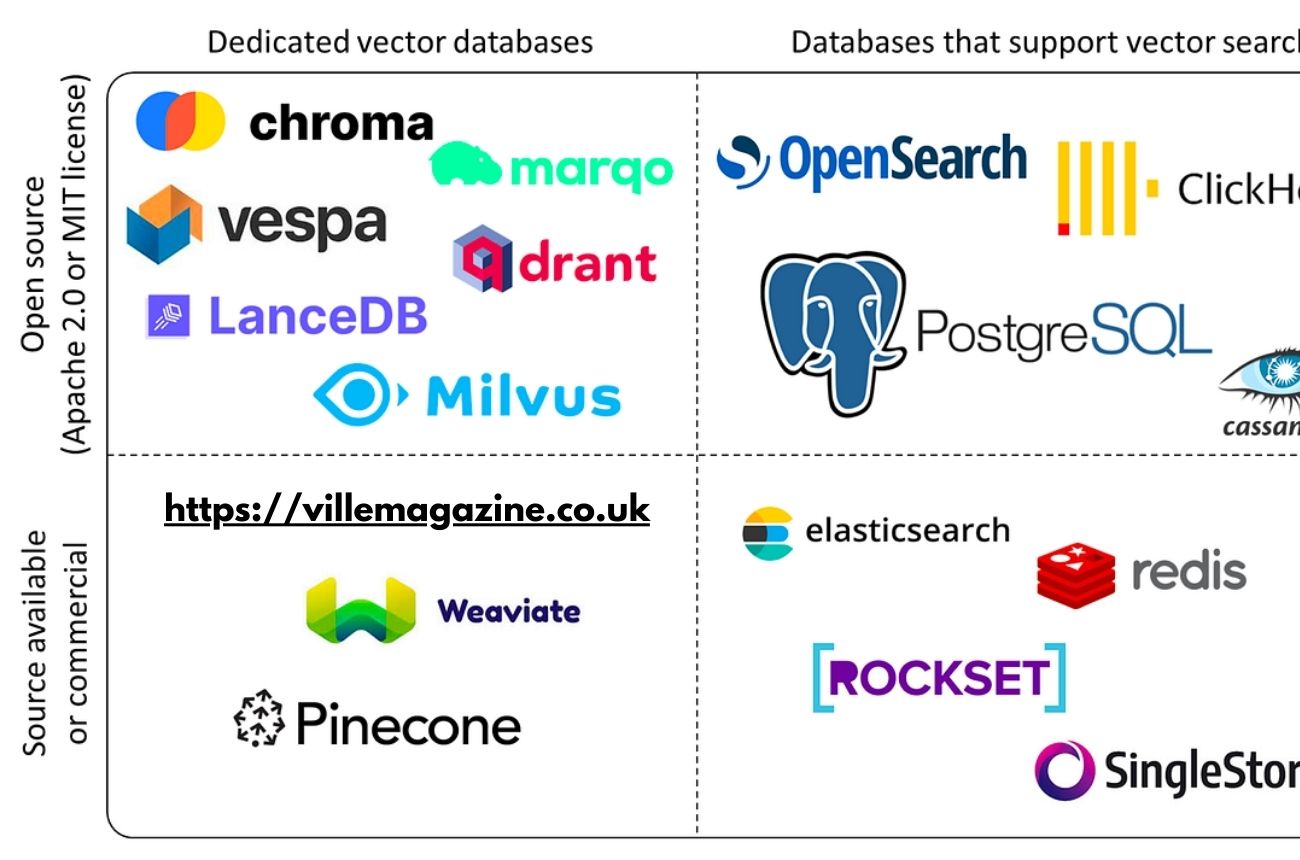Blog
Vector Databases: The Future of AI-Powered Search

The world of data is rapidly changing. Traditional databases, while powerful, were designed for structured information such as customer names, transactions, or product inventories. However, with the explosive growth of artificial intelligence, machine learning, and natural language processing, a new challenge has emerged: how do we efficiently search and organize complex, unstructured data like images, audio, and text embeddings?
This is where vector databases come in. Unlike traditional relational or document-based systems, vector databases store data as high-dimensional vectors — essentially numerical representations of complex content. These databases are not just storage systems; they are specialized engines designed to enable semantic search, recommendation engines, fraud detection, and even real-time personalization.
As industries race toward AI-driven transformation, vector databases are becoming a cornerstone of modern infrastructure. In this article, we’ll explore their core concepts, architecture, use cases, benefits, challenges, and the newly emerging trends that make them a critical technology for the future of AI-powered search.
What Are Vector Databases?
Vector databases are specialized systems built to store, index, and query vector embeddings — numerical representations of data produced by machine learning models. For example, when you feed an image into a deep learning model, it generates a vector that encodes its features. Similarly, text can be transformed into vectors through embeddings like Word2Vec, GloVe, or OpenAI’s embedding models.
Unlike traditional keyword search, which matches exact words, vector databases allow semantic similarity search. That means if you search for “blue sedan,” the system won’t just match the words “blue” and “sedan” — it will find semantically similar concepts, such as “navy car” or “compact vehicle.” This makes vector databases critical for AI-driven applications where context matters more than literal matches.
The Core Architecture of Vector Databases
Vector databases rely on unique architectural principles that distinguish them from relational or NoSQL systems.
1. Embeddings Storage
The database stores vectors as arrays of floating-point numbers, often in dimensions ranging from 128 to over 10,000. These vectors capture the essence of the data, making it possible to compare different inputs based on similarity.
2. Indexing Methods
To enable efficient similarity search, vector databases use specialized indexing structures such as:
-
HNSW (Hierarchical Navigable Small World Graphs) – allows fast approximate nearest neighbor (ANN) search.
-
IVF (Inverted File Index) – partitions vectors into clusters for rapid retrieval.
-
PQ (Product Quantization) – compresses vectors to reduce memory usage.
3. Approximate Nearest Neighbor (ANN) Search
ANN search is the backbone of vector databases. Instead of scanning every record, it quickly finds the “nearest” vectors to a query in high-dimensional space, balancing speed and accuracy.
4. Hybrid Search Support
Modern vector databases often combine vector search with traditional keyword or metadata filtering, enabling multimodal queries like “Find documents about climate change with images of melting glaciers.”
Key Benefits of Vector Databases
Why are vector databases becoming so important in AI-powered search? Here are the standout advantages:
1. Semantic Understanding
They move beyond keyword matches to capture the context and meaning behind queries.
2. Scalability
Optimized for billions of vectors, these databases handle large-scale AI and machine learning workloads.
3. Real-Time Personalization
By continuously analyzing user interactions, vector databases can power instant recommendations in e-commerce, streaming, or social platforms.
4. Cross-Modal Search
They enable searching across different content types — for instance, querying with text to find relevant images or using an image to find similar products.
5. Integration with AI Workflows
Vector databases are designed to integrate seamlessly with ML pipelines, embedding models, and APIs, making them developer-friendly.
Real-World Applications of Vector Databases
1. E-Commerce and Recommendations
Amazon-like platforms use vector databases to recommend products based on similarity in embeddings, improving customer experience.
2. Search Engines
Companies are building semantic search systems that understand user intent, providing more accurate results than keyword-based engines.
3. Healthcare and Biotech
In medicine, vector databases help analyze molecular structures, images, and patient data, enabling faster drug discovery and diagnostics.
4. Finance and Fraud Detection
By storing transaction patterns as vectors, banks detect anomalies and suspicious behaviors more effectively.
5. Social Media and Content Platforms
They enable content moderation, personalized feeds, and recommendation algorithms by analyzing embeddings of text, images, and videos.
6. Cybersecurity
Vector databases help identify unusual network behaviors by analyzing vectors representing traffic patterns.
Vector Databases vs Traditional Databases
It’s important to understand how vector databases differ from traditional systems:
| Feature | Traditional Databases | Vector Databases |
|---|---|---|
| Data Type | Structured (tables, rows, columns) | High-dimensional vectors (embeddings) |
| Query Method | Exact matches, SQL | Similarity search (ANN, cosine, Euclidean) |
| Best For | Transactions, reporting | AI-driven search, recommendations |
| Speed Optimization | Indexes, joins, caching | ANN algorithms, graph indexing |
| Use Cases | Banking, ERP, CRM | NLP, image search, real-time personalization |
Emerging Trends in Vector Databases
1. Hybrid Search with Large Language Models (LLMs)
LLMs like GPT rely on embeddings for context retrieval. Vector databases are now being fused with LLM pipelines to power retrieval-augmented generation (RAG) systems.
2. Open-Source Adoption
Platforms like Milvus, Weaviate, and Pinecone are leading the open-source ecosystem, making it easier for startups to adopt vector technology.
3. Cloud-Native Scalability
Major providers like AWS, Google Cloud, and Microsoft Azure are launching managed vector database services to help enterprises scale effortlessly.
4. Edge AI Integration
Vector databases are moving closer to edge devices, enabling on-device similarity search for applications like AR/VR or autonomous vehicles.
5. Security and Privacy Enhancements
As vectors can encode sensitive information, new methods like differential privacy and secure multi-party computation are being explored.
Challenges and Limitations
Despite their potential, vector databases face several hurdles:
-
High Storage Costs – Vectors are memory-heavy, especially in billion-scale datasets.
-
Approximation Trade-offs – ANN sacrifices some accuracy for speed, which might be unacceptable in critical applications like healthcare.
-
Complexity – Integrating vector databases with existing enterprise infrastructure can be challenging.
-
Evolving Standards – Lack of standardized benchmarks makes it harder to compare solutions.
The Future of Vector Databases in AI-Powered Search
Vector databases are still a relatively new technology, but their trajectory is clear. As AI adoption expands across industries, the need for contextual, semantic, and cross-modal search will only grow.
We are moving toward a future where every platform — from search engines to recommendation systems — will leverage vector databases to deliver more intelligent, human-like interactions. Imagine a world where you can describe an image in words and instantly retrieve the closest match from billions of photos, or where healthcare systems can pinpoint a rare disease by comparing patient scans against a global database.
The combination of vector databases, LLMs, and real-time analytics represents a paradigm shift that will shape the next generation of AI-powered tools.
Conclusion
The evolution of data demands a new type of database — one capable of understanding meaning, not just structure. Vector databases represent that evolution. With their ability to handle high-dimensional embeddings, support semantic search, and scale to billions of entries, they are quickly becoming the backbone of modern AI infrastructure.
As businesses and developers continue to explore new applications, vector databases will solidify their place as the future of AI-powered search, transforming how we interact with information in every field, from e-commerce to medicine to security.
-

 Celebrity5 months ago
Celebrity5 months agoTrey Kulley Majors: The Untold Story of Lee Majors’ Son
-

 Celebrity5 months ago
Celebrity5 months agoChristina Erika Carandini Lee: A Life of Grace, Heritage, and Privacy
-

 Celebrity5 months ago
Celebrity5 months agoJamie White-Welling: Bio, Career, and Hollywood Connection Life with Tom Welling
-

 Celebrity4 months ago
Celebrity4 months agoNick Schmit? The Man Behind Jonathan Capehart Success
















